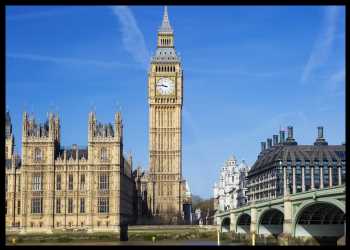
The UK economy registered a stronger than estimated recovery in the first half of the year despite high inflation and tighter monetary policy.
Gross domestic product registered a sequential growth of 0.2 percent in the second quarter, which was unchanged from the first estimate, the Office for National Statistics reported Friday. This followed an upwardly revised growth of 0.3 percent in the first quarter.
As a result, GDP was 1.8 percent above the pre-coronavirus pandemic levels in the second quarter. Britain’s growth rate has now exceeded those of France and Germany.
On the production-side, services output expanded 0.2 percent, unrevised from the previous estimate.
The growth in production sector was revised up to 1.2 percent from 0.7 percent, while growth in construction output was confirmed at 0.3 percent.
Although GDP data showed that the economy was a bit more resilient than previously thought, higher interest rates will trigger a mild recession involving a 0.5 percent fall in GDP in the coming quarters, Capital Economics’ economist Ruth Gregory said.
The expenditure-side of GDP showed that there were increases in household consumption and government spending. This was partially offset by a fall in the volume of net trade.
Household spending grew 0.5 percent and government spending moved up 2.5 percent.
Gross fixed capital formation posted a sequential growth of 0.8 percent, revised up from no growth estimated previously. The increase in business investment was revised up to 4.1 percent from 3.4 percent.
Inventories fell by GBP 3.2 billion in the second quarter, revised down from a fall of GBP 2.0 billion in the first estimate.
The total trade deficit was 1.5 percent of nominal GDP, revised up from a first estimate deficit of 2.4 percent.
Data showed that with income growing more than expenditure, the household saving ratio increased 9.1 percent, up from 7.9 percent a quarter ago.
The ONS revised up economic growth for 2022 to 4.3 percent from 4.1 percent.
Source: Read Full Article